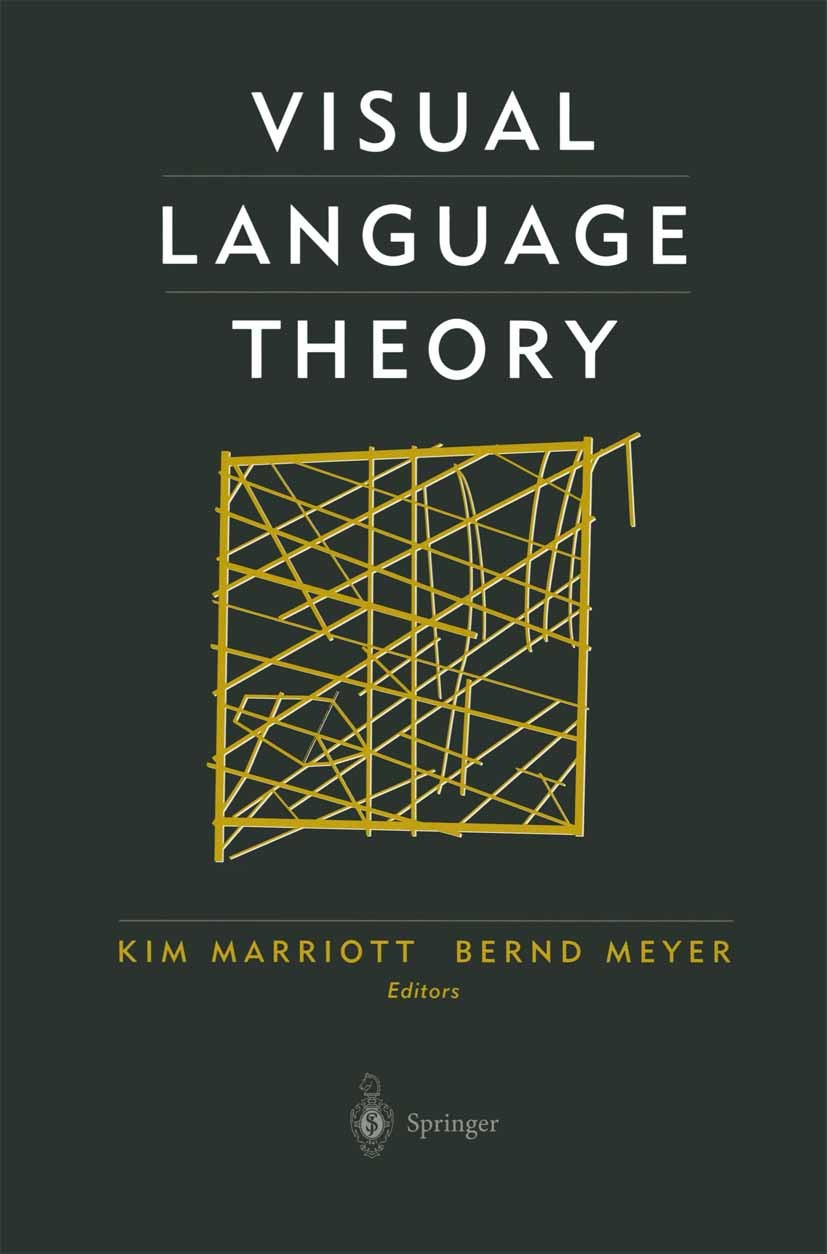| 书目名称 | Visual Language Theory | | 编辑 | Kim Marriott,Bernd Meyer | | 视频video | http://file.papertrans.cn/984/983747/983747.mp4 | | 概述 | A broad-ranging survey of our current understanding of visual languages and their theoretical foundations * Focusing on definition, specification, and structural analysis using grammars, logic, and al | | 图书封面 |  | | 描述 | Kim Marriott Bernd Meyer Communication is one of the hallmarks of humans. When we think of hu man communication, most people first think of spoken and written lan guages. These are similar in that symbols in the language are encountered and processed sequentially, either temporally as they are spoken or as char acters are read across a page. However, not all human communication is sequential in nature. Important components of human communication are visual languages, such as maps or diagrams. In these languages the basic symbols are not encountered sequentially but rather seen together at a glance. Visual languages are ubiquitous in human cultures, ranging from tradi tional paintings of central Australian aborigines which are, in part, maps of the countryside to an architect‘s design of a new building. Visual languages have been employed from earliest pre-history to the present and are used in almost every human endeavor. They cover the entire spectrum of human expression ranging from fine art, such as an abstract expressionist‘s private language, to precise technical communication using rigorously defined no tation, such as musical notation, mathematical notation, or street m | | 出版日期 | Book 1998 | | 关键词 | Syntax; artificial intelligence; circuit design; computational linguistics; formal language; grammar; huma | | 版次 | 1 | | doi | https://doi.org/10.1007/978-1-4612-1676-6 | | isbn_softcover | 978-1-4612-7240-3 | | isbn_ebook | 978-1-4612-1676-6 | | copyright | Springer Science+Business Media New York 1998 |
The information of publication is updating

|
|
 |Archiver|手机版|小黑屋|
派博传思国际
( 京公网安备110108008328)
GMT+8, 2025-12-27 11:59
|Archiver|手机版|小黑屋|
派博传思国际
( 京公网安备110108008328)
GMT+8, 2025-12-27 11:59


